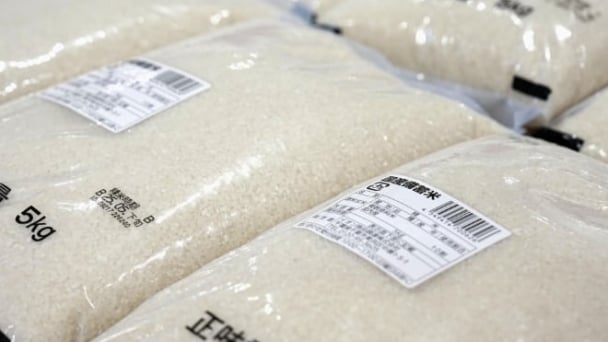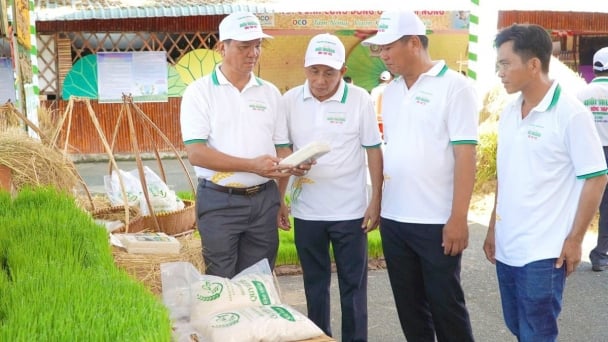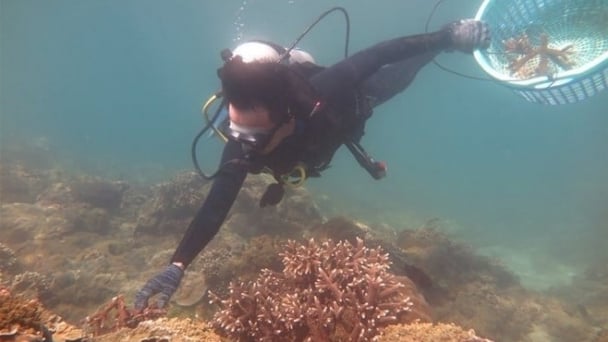June 12, 2025 | 08:43 GMT +7
June 12, 2025 | 08:43 GMT +7
Hotline: 0913.378.918
June 12, 2025 | 08:43 GMT +7
Hotline: 0913.378.918
Blue carbon refers to the carbon absorbed and stored over the long term in marine and coastal ecosystems such as mangrove forests, seagrass beds, and coastal marshes. Unlike "green carbon" found in terrestrial forests, underwater ecosystems have the ability to retain carbon for hundreds to thousands of years. According to the World Bank, the sequestration and storage of coastal blue carbon is valued at up to USD 190 billion annually. In addition, deep-sea blue carbon continues to be explored.

Marine and coastal ecosystems are massive blue carbon tanks. Photo: sustainabletravel.org.
International studies have shown that coastal ecosystems absorb CO2 at rates many times faster than tropical forests, with greater and longer storage capacity. In addition to serving as massive carbon tanks, these ecosystems act as “green shields” that protect coastlines by mitigating the impact of strong waves, tides, and erosion caused by climate change.
Blue carbon is valued higher than most other carbon types due to the synergistic benefits it offers, notably in conserving marine biodiversity, regenerating aquatic resources, and securing the livelihoods of coastal communities.
At present, several tools have been developed to assess the quality of carbon credits. A notable example is the United Nations’ High-Quality Blue Carbon Principles and Guidance, which provides criteria to help both carbon credit buyers and sellers identify projects that deliver real benefits for both the planet and people. Through ecosystem restoration efforts, the world aims to sequester 380 million tons of CO2 and generate USD 11.8 billion in carbon finance by 2040.
Vietnam possesses enormous blue carbon potential, with a coastline stretching over 3,200 km² and an exclusive economic zone spanning more than 1 million km². The country is also recognized as one of the world’s important marine biodiversity centers, with six key marine biodiversity zones from the Gulf of Tonkin to the Spratly Island waters.
Dr. Luu The Anh, Director of the Institute of Natural Resources and Environment under the Vietnam National University, Hanoi, stated that blue carbon tanks include mangrove forests, seagrass ecosystems, coral reefs, and phytoplankton such as chlorophyll-bearing marine algae and plants. These represent potential sources of carbon credits. However, realizing this value requires a prerequisite of protecting ecosystems and marine biodiversity.

Coastal ecosystems such as mangrove forests, seagrass beds, and coral reefs are all potential blue carbon tanks.
In reality, the greatest challenge lies in resolving conflicts with economic development goals. Marine protected areas are often located in regions rich in natural resources, which also makes them highly susceptible to overexploitation. This, in turn, leads to rapid ecosystem degradation, resulting in the loss of their inherent carbon absorption capacity. Therefore, the establishment of marine protected areas needs to identify conservation objectives and find solutions to harmonize conservation with the socio-economic development of local communities, particularly ensuring livelihoods for coastal communities.
Alongside conservation, it is essential to have methods to measure blue carbon for each marine ecosystem. This is the basis for preparing carbon credit issuance dossiers, whether traded on domestic or international markets.
A study conducted by the Institute of Forest Ecology and Environment (Vietnam National University of Forestry) in Soc Trang from November 2022 to October 2024 has developed a method to measure carbon storage in three mangrove species: Sonneratia, Avicennia, and Rhizophora. According to M.S. Nguyen Van Thi, a representative of the research team, the balance between economic development and natural resource conservation remains a difficult problem that requires close collaboration among state agencies, non-governmental organizations, and local communities.
In reality, data collection is a challenging process that requires substantial effort, financial resources, advanced technology, and highly specialized expertise. Moreover, agricultural and aquaculture development activities pose risks of degrading mangrove forests, leading to considerable losses in carbon stocks and ecological functions.
Building on the pilot study in Soc Trang, the Department of Forestry and Forest Protection (under the Ministry of Agriculture and Environment) issued technical guidelines for investigating and measuring carbon in mangrove forests in 2024. This is the first specialized guideline in this field and is applied nationwide.
Mr. Tran Quang Bao, Director General of the Department of Forestry and Forest Protection, said that carbon from mangrove forests has received attention from international partners in terms of carbon credit quantification. These carbon credits are highly valued, often trading at prices 3-4 times higher than those from other forest ecosystems.
At the World Economic Forum, Ms. Jennifer Morris, CEO of The Nature Conservancy (TNC), identified four key pillars to enhance the supply of blue carbon credits and accelerate global greenhouse gas emissions reduction.
First, invest in high-quality carbon projects. Projects with clear scientific methods and transparent mechanisms can generate trustworthy credits while ensuring equitable benefits for local communities.
Second, support local communities in accessing voluntary carbon markets. With clear benefit-sharing models, communities can become key forces in conservation rather than objects affected.

In addition to carbon capture, seagrass beds and other blue carbon ecosystems can support industries such as fisheries and ecotourism. Photo: Shutterstock.
Third, integrate blue carbon into the action plan for implementing the Paris Agreement on global climate change. Thanks to its natural and long-term carbon absorption capacity, blue carbon is becoming an important component in climate change mitigation and adaptation strategies.
Lastly, strengthen global cooperation. The restoration and protection of blue carbon ecosystems require involvement from local to international levels, from governments to businesses, and from research institutes to community organizations.
Expanding the supply of blue carbon credits is not merely a market strategy; it is an essential part of the journey to protect the planet and promote sustainable development. Preserved marine ecosystems not only bring benefits to communities and help the carbon market operate transparently but also are an ally in the fight against the climate crisis.
Translated by Thu Huyen
/2025/06/11/3507-1-161904_583.jpg)
(VAN) Seagrass beds and coral reefs serve as 'cradles' that nurture life in the ocean depths, creating rich aquatic resources in Vietnamese waters.
![Turning wind and rain into action: [1] Forecasting for farmers](https://t.ex-cdn.com/nongnghiepmoitruong.vn/608w/files/news/2025/06/11/e5a48259d6a262fc3bb3-nongnghiep-111919.jpg)
(VAN) Weather is no longer just a matter of fate. Forecasts have now become an essential companion for farmers in every crop season.
/2025/06/10/2501-3-082025_983.jpg)
(VAN) Mr. Le Hoang Minh, Head of Vinamilk's Net Zero project, recently shared insights on the integration of production, energy, and technology in Vinamilk’s green transition journey.

(VAN) Over half of large-scale rice producers feel that store prices for rice are 'too high', indicating that many of them share concerns with consumers about the elevated cost of the staple food in Japan.

(VAN) Dong Thap has launched a meeting in response to the Action Month for the Environment under the theme 'Live Green - Join Hands for a Green Economy' at Tram Chim National Park.

(VAN) The ocean has the capacity to absorb millions of tons of carbon, provided that mangrove forests, coral reefs, and biodiversity are protected.